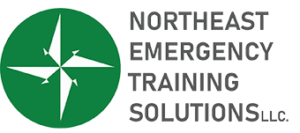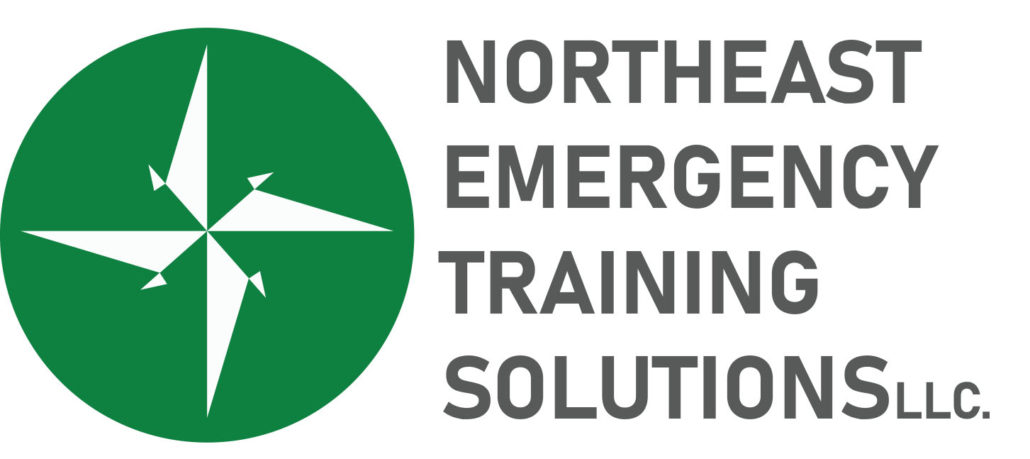Course Full
Keep checking the website for our Summer 2022 course!
Spring 2022 EMT Course Syllabus
Instructor/Coordinator: Chris McCarthy
Cell: 802-598-0121
Email: chris@netsvt.com
Course Meeting Days and Times:
Live Instructor Sessions: Mondays, 17:30-20:30
Specified Clinical Skills Days – In Person 08:30-16:30 (See course list for exact dates).
The expected location for the skills sessions:
TBD
Course Online Learning: JB Learning Portal – (https://www.jblearning.com/)
Cost: $1,000.00 (cost includes book)
Basic Cardiac Life Support
All students will receive an American Heart Association Basic Life Support CPR Card during the course.
More information: https://international.heart.org/en/our-courses/basic-life-support
Course Description
The Emergency Medical Technician Hybrid course prepares the EMT student to provide pre-hospital assessment and care for patients of all ages with a variety of medical conditions and traumatic injuries. Areas of study include an introduction to emergency medical services systems, roles and responsibilities of EMTs, anatomy and physiology, pharmacology, medical emergencies, traumatic injuries, special considerations for working in the prehospital setting, and providing patient transportation.
Teaching/Learning Methods:
Teaching-learning methods in this course may include, but are not limited to: assigned readings, group discussion, critical thinking exercises, labs, and class activities. A majority of class activities will take place online. Students will be assigned weekly “blocks” to complete on the Jones and Bartlett Learning Navigate platform. Mandatory live instructor sessions will occur weekly. Zoom will be used for all live online sessions. These meetings will be recorded as a make-up option for those unable to “attend” live online sessions. This option will be permitted on a limited basis at
the discretion of the course coordinator. Evaluation procedures include quizzes, written examinations, and assignments.
Course Objectives:
At the completion of this course the student shall be able to:
1. Describe the roles of EMS in the health care system.
2. Demonstrate the professional attributes expected of EMTs.
3. Perform the roles and responsibilities of an EMT with regard to personal safety and wellness, as well as the safety of others.
4. Perform the duties of an EMT with regard for medical-legal and ethical issues, including functioning under medical direction and within the scope of practice.
5. Apply principles of anatomy, physiology, pathophysiology, life span development, and therapeutic communications to the assessment and management of patients.
6. Identify the need for and perform immediately lifesaving interventions to manage a patient’s airway, breathing, and circulation.
7. Assess and manage patients of all ages with a variety of complaints, medical conditions, and traumatic injuries.
8. Apply principles of emergency medical services operations, including considerations in ambulance and air medical transportation, multiple-casualty incidents, gaining access to and extricating patients, hazardous materials incidents, and responding to situations involving weapons of mass destruction.
Functional Job Requirements:
All students must meet the functional job requirements of an Emergency Medical Technician as outlined in the Student Handbook distributed online by the Vermont Department of Health Office of EMS throughout the program.
Course Textbook:
AAOS Emergency Care and Transportation of The Sick and Injured, 11th Edition (included in course fee)
Required Equipment/Supplies:
Each student is required to have the following equipment and supplies for skills labs:
Pocket Mask, BP cuff, NRB, (1) Watch (not SMART phone)
Gloves (appropriate size), Stethoscope, Cravats (2)
Alcohol based hand cleaner, Penlight, Pen/Pencil, safety glasses and a face mask (surgical style or cloth).
Course Completion Requirements:
Successful completion of this course requires adherence to course policies, completing all course assignments, maintaining a course average of 70% with a minimum score of 70% on the course
final examination, and successfully demonstrating all required skills. In addition, all students will be required to have a minimum of five documented patient contacts.
Course Attendance Policy:
Student participation is required for all scheduled live online sessions, as well as lab sessions. Students may be dropped from the course for excessive absences of any kind.
Online class attendance will be based on weekly completion of assignments (including the online presentations).
Excused absences may be granted by the course instructor/coordinator and/or TA (for group sessions) for extenuating circumstances. If more than two absences occur for any reason, the status of the student will be reviewed by the NETS faculty to determine a disposition. Course failure is likely under these circumstances.
If a student misses any weekly activities, he or she is responsible for any missed quizzes, examinations, and material covered in that block. Prompt arrival is expected at all class activities, whether in-person or online. Like being on shift for your agency – lives depend on our prompt response and prompt attendance.
Comportment:
Students are expected to conduct themselves in accordance with the professional expectations for EMT’s at all times. Students are reminded that they are representatives of Vermont EMS as well as the agencies they serve and this educational program. Professional conduct is essential to a successful course experience and rewarding EMS career.
Dress and Appearance:
•Students shall be appropriately and neatly attired so as not to distract from the learning process. Students should wear comfortable slacks or pants, shirts or t-shirts, and boots, shoes or sneakers.
•For the safety of the student and others, students may not wear shorts, tank tops, half shirts, sleeveless shirts, halter-tops, tube tops, skirts, open toe/heel shoes or sandals.
•Students should dress with safety in mind, as training sessions will require the use of various equipment and training aides.
•Staff members accept the responsibility for reasonable interpretation of this policy and advising of the student in its regard.
•Students arriving wearing inappropriate attire may not be able to participate in the training evolutions, for the safety of the student.
*On days of practical labs the students will wear clothing similar to what they will wear while on duty with their service. This provides the students the ability to train like they will practice.
Academic Dishonesty:
Academic dishonesty in any form will not be tolerated and is grounds for immediate dismissal from the program and other administrative action. Examples include, but are not limited to:
· Cheating in any form
· Falsification or forgery of academic documents, applications, clinical evaluations, lab evaluations, etc.
· Plagiarism (including copying and pasting of electronic text into assigned work)
Course Deposit and Refund Policy:
Students are required to provide a minimum deposit of $375.00 to secure a seat in the course. Full payment is preferred, but payment plans may be considered on a case-by-case basis. Full refunds for the class will be granted, less the deposit which will be used to cover non-refundable course materials, if the student drops from the course within the first (2) weeks. No refunds will be granted after the first (2) weeks have passed. Course registration and payment can be done through the NETS website, www.netsvt.com
Course Grading and Grading Scale:
Although passing is a 70%, it is strongly encouraged that students strive for an 80% on all exams. This will encourage your study for successful passing of the CAT (Computer Adaptive Test).
Extra Assignments 10 %
4 Exams 10 % each
Portfolio 20%
Final Written Exam 30 %
Total 100 percent
Retest and Late Exam/Assignment Policy:
Students with a non-passing grade on an exam will be allowed (1) retest opportunity per exam. The retest must occur within (1) week of the closing date of the posted exam. (10) points will automatically be deducted from whatever score is obtained on the retest and the resulting score will be the recorded exam score in the gradebook.
Students who miss an exam, without a valid excuse, will be given a zero and must then follow the policy for a non-passing exam score.
| As for a late assignment, (10) points will be deducted for each day that the assignment is late. Percent | Letter Grade |
| 100 | A |
| 95-99 | A- |
| 90-94 | B |
| 85-89 | B- |
| 80-84 | C |
| 76-79 | C- |
| 70-75 | D |
| Below 70 | F |
** Students will be required to complete the NIMS 100 & 700, Haz-Mat Awareness, and Mandated Reporter online programs. Credit hours will be applied as provided by the course outline from each program. Please see syllabus for due date.
NIMS 100 & 700: https://training.fema.gov/is/courseoverview.aspx?code=IS-100.c
https://training.fema.gov/is/courseoverview.aspx?code=IS-700.b
Haz-Mat Awareness: https://training.fema.gov/is/courseoverview.aspx?code=is-5.a
Online Mandated Reporter Training: http://dcf.vermont.gov/protection/reporting/mandated
| Course Schedule (Dates highlighted in green are Saturday sessions) Date | Chapter | Tests, Quizzes, Lab Day Info |
| Week 1
1/10-1/16 |
Course Introduction and Overview
Chapter 1 EMS Systems Chapter 2 Workforce Safety and Wellness Chapter 3 Medical, Legal, and Ethical Issues Chapter 4 Communication and Documentation |
|
| Week 2
1/17-1/23 |
Chapter 8
Lifting and Moving Patients Chapter 9 Patient Assessment Chapter 10 Airway Management Lab: Skill Competencies |
LAB: 1/22 |
| Date | Chapter | Tests, Quizzes, Lab Day Info |
| Week 3
1/24-1/30 |
Chapter 5
Medical Terminology Chapter 6 The Human Body Chapter 7 Life Span Development Chapter 13 BLS Resuscitation |
Exam 1 |
| Week 4
1/31-2/6 |
Chapter 11
Principles of Pharmacology Chapter 12 Shock Lab: Skill Competencies |
LAB: 2/5 |
| Week 5
2/7-2/13 |
Chapter 14
Medical Overview Chapter 15 Respiratory Emergencies Chapter 16 Cardiovascular Emergencies |
| Date | Chapter | Tests, Quizzes, Lab Day Info |
| Week 6
2/14-2/20 |
Chapter 17
Neurologic Emergencies Chapter 18 GI/GU Emergencies Chapter 19 Endocrine and Hematologic Emerg. Chapter 20 Immunologic Emergencies Lab: Skill Competencies |
LAB: 2/19 |
| Week 7
2/21-2/27 |
Chapter 24
Trauma Overview Chapter 25 Bleeding Chapter 26 Soft-Tissue Injuries Chapter 28 Head and Spine Injuries |
Exam 2 |
| Week 8
2/28-3/6 |
Chapter 21
Toxicology Chapter 22 Psychiatric emergencies Chapter 23 Gynecologic emergencies Lab: Skill Competencies |
LAB: 3/5 |
| Date | Chapter | Tests, Quizzes, Lab Day Info |
| Week 9
3/7-3/13 |
Chapter 27
Face and Neck Injuries Chapter 29 Chest Injuries Chapter 30 Abdominal / GU Injuries Chapter 31 Orthopedic Injuries |
|
| Week 10
3/14-3/20 |
Chapter 32
Environmental Emergencies Chapter 36 Patients with Special Challenges Chapter 35 Geriatric Emergencies Lab: Skill Competencies |
LAB: 3/19 |
| Week 11
3/21-3/27 |
Chapter 33
OBGYN / Neonatal Care Chapter 34 Pediatric Emergencies |
Exam 3 |
| Date | Chapter | Tests, Quizzes, Lab Day Info |
| Week 12
3/28-4/3 |
Chapter 37
Transport Ops Chapter 38 Vehicle Extrication & Special Rescue Chapter 39 Incident Management Chapter 40 Terrorism Response / Disaster Management Chapter 41 Team approach to healthcare Lab: Skill Competencies |
LAB: 4/2 |
| Week 13
4/4-4/10 |
Scenario Practice | |
| Week 14
4/11-4/17 |
Scenario Practice
Lab: Scenario Competencies |
LAB: 4/16 |
| Week 15
4/18-4/24 |
Scenario Practice | Exam 4 |
| Week 16
4/25-5/1 |
Scenario Practice
Lab: Scenario Competencies |
LAB: 4/30 |
| Week 17
5/2-5/8 |
Scenario Practice | |
| Week 18
5/9-5/15 |
Final Review
Lab: Scenario Competencies |
Final Exam Opens. Time limit of 180 minutes.
LAB: 5/14 |











